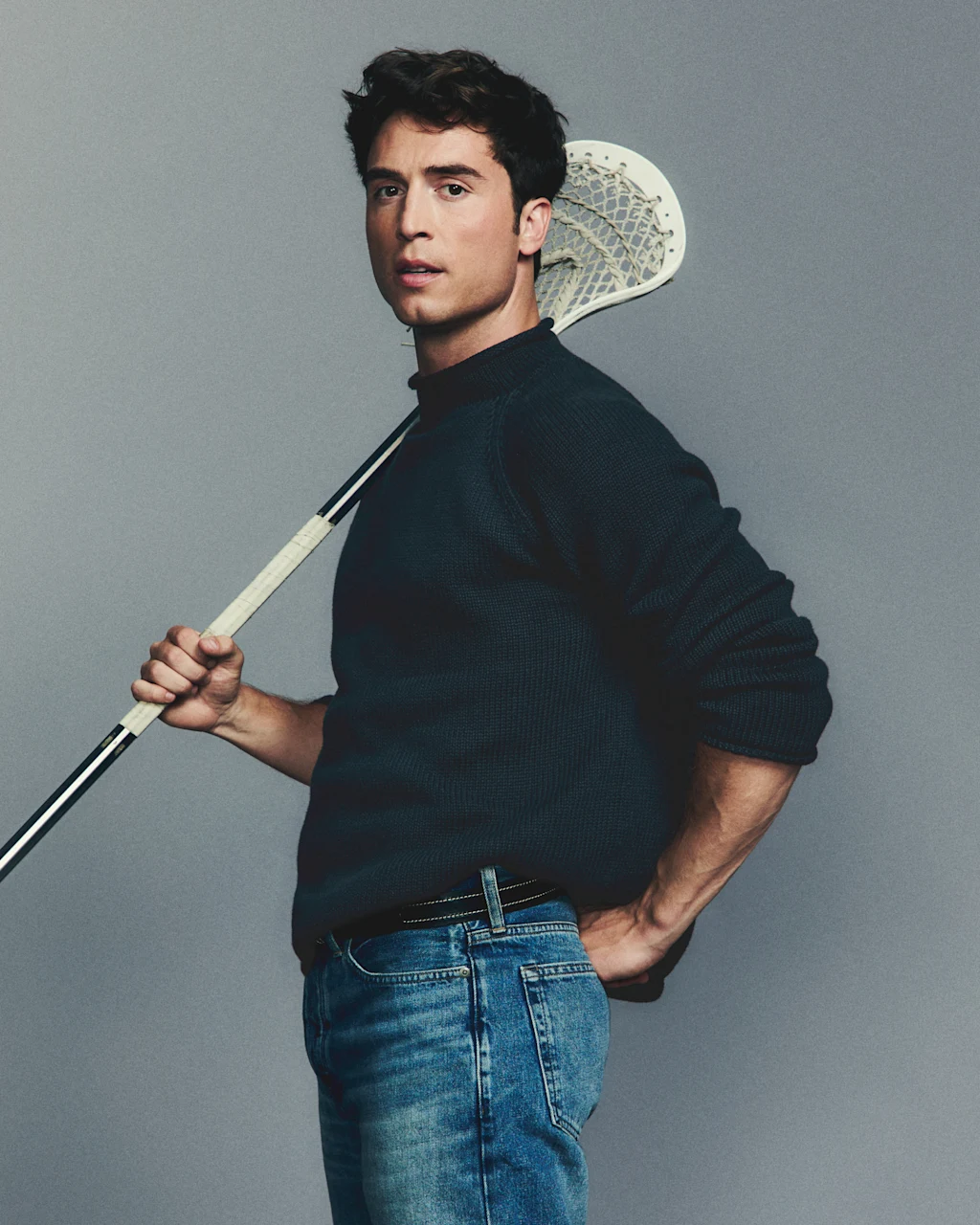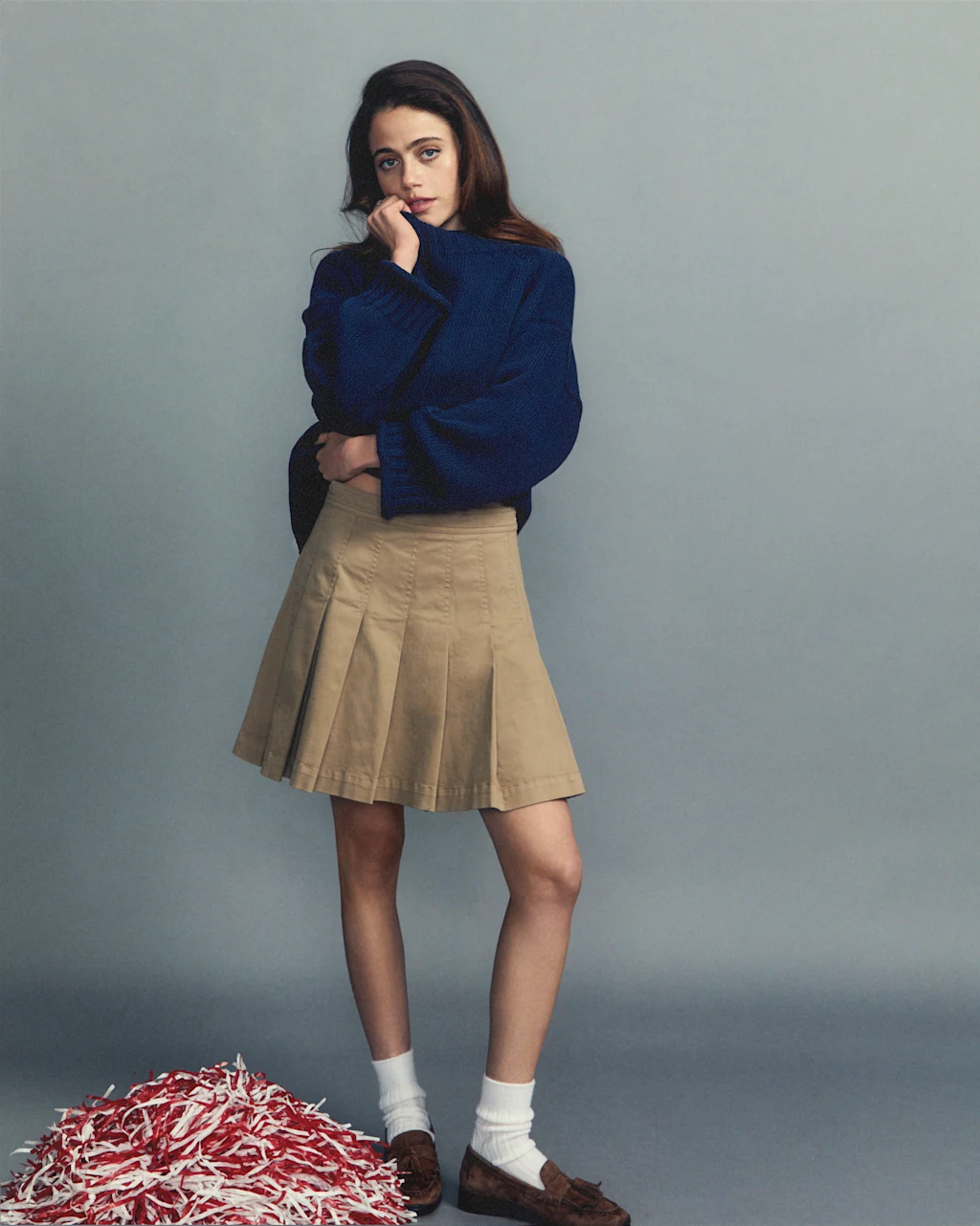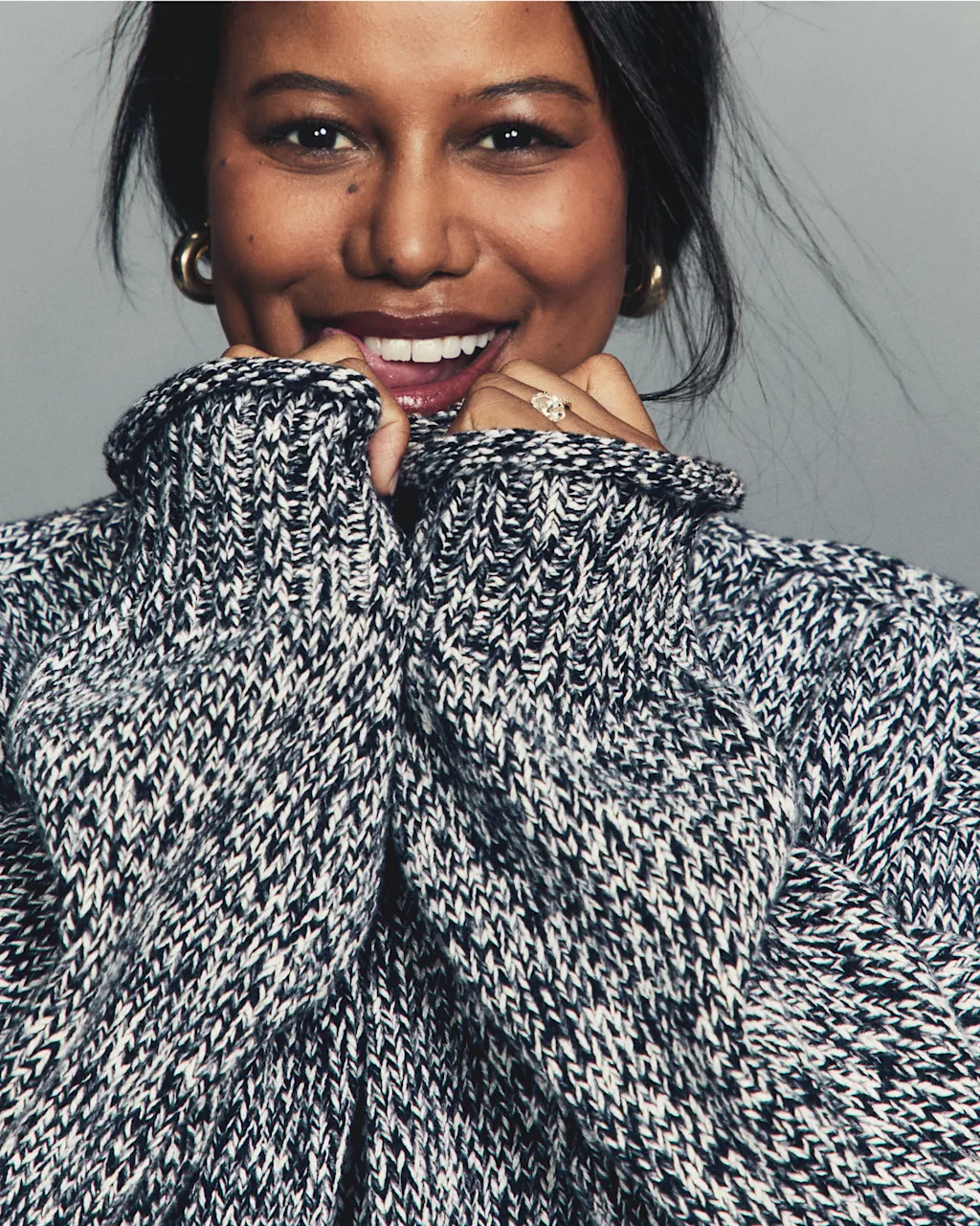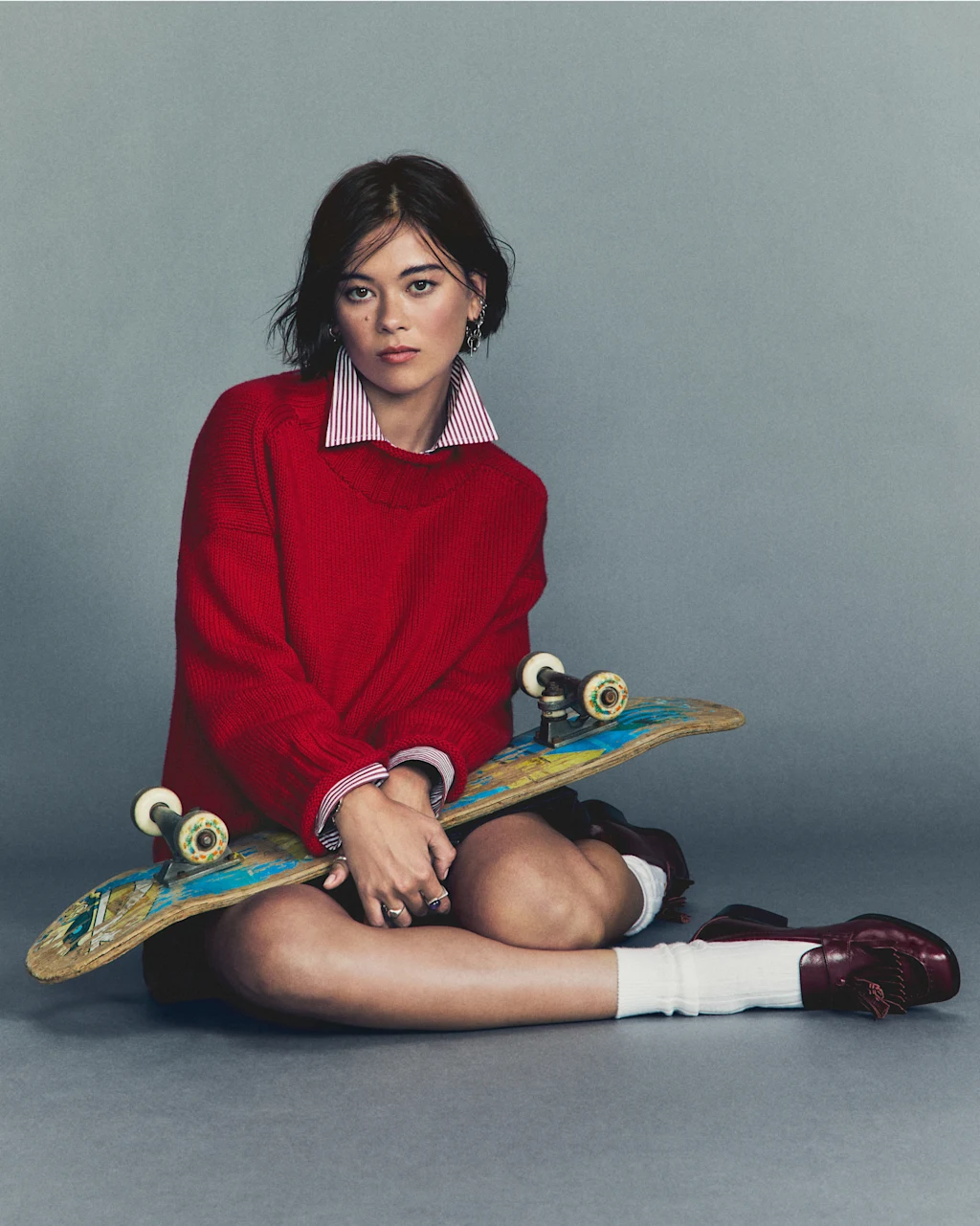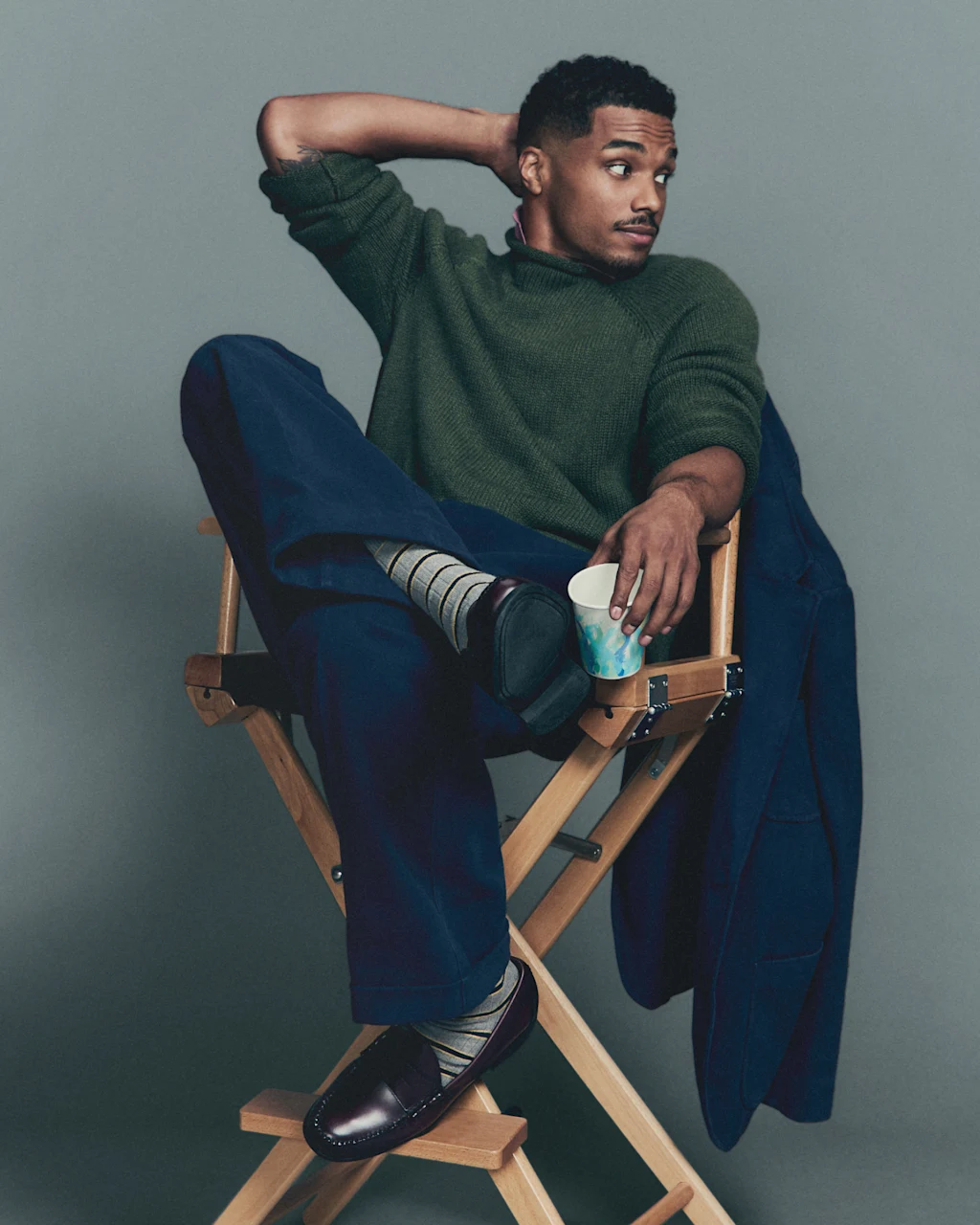[ad_1]
Raise your hand if your credit card has been personally victimized by the J. Crew rollneck sweater. Did you raise your hand, with it loosely hugged by a knit cotton sleeve featuring a rolled hem? One that’s no longer available online, and for that reason makes you feel part of a selective in-group?
Yes?
Then say, “thank you, Julia Collier.”
Over the past two weeks, Collier, J. Crew’s chief marketing officer, has directly influenced your shopping habits. The “next rollneck generation” campaign is her brainchild. It first rolled out September 16 and has since wormed its way into our brains with a compelling cast of seven including actor Benito Skinner, actress Molly Gordon, and singer Maggie Rogers, all in the brand’s rollneck sweaters, which range in price from $98 to $118.
It’s Collier’s first major J. Crew campaign since joining the company as CMO in January following a five-year run as Skims’s senior vice president of brand marketing. A few of her past hits: cinematic Skims campaigns with the North Face, ultimate brat Charli XCX, a powerful Team USA, Lana Del Rey for Valentine’s Day, and dreamy Nicola Coughlan shot by Elizaveta Porodina.
Now, “the next rollneck generation” gives a core J. Crew product that’s been around for more than 30 years new life. Collier produced the campaign with hyper-specific talent and elevated creative choices, including a very specific vintage lacrosse stick prop and real film for that authentic grainy effect. It shows that to breakthrough in hyper-content-saturated online spaces like TikTok, brand marketing needs to become brandtainment.
“I believed at Skims, and I believe at J. Crew—and I believe all brands have the opportunity to do this—that we are entertainers,” says Collier. “Our role as a brand is, yes, to sell clothes, but it’s really to entertain our audiences and to entertain our customers, and behave almost like media. You can’t just do one thing.”
The ad has almost worked too well, because the sweater is nearly impossible to find now. Online, most colors are out of stock or preorder. New customers to J. Crew’s website increased almost 40% the week of launch compared to the week prior. Social engagement and impressions “are far exceeding anything else we’ve done really around this type of campaign in a long time,” according to Collier.
J. Crew’s revival
It’s been a while since anyone’s cared much about J. Crew. The company filed for bankruptcy in 2020 following pandemic-related forced store closures and a slow pivot to e-commerce. This proved to be unsustainable headwinds for the company to take on, considering its significant debt related to a 2011 private equity leveraged buyout that took the company private.
But a lack of cultural relevancy predated, or perhaps in part precipitated, those rocky financials. Both longtime creative director Jenna Lyons and CEO Mickey Drexler left the company in 2017. The era of the day-to-night statement necklace was over, and it seemed like American culture had read J. Crew its last rites, too.
But after J. Crew emerged from bankruptcy in late 2020, it began a period of business stabilization that included the internal hire of its new CEO Libby Wadle from sister brand Madewell (she was at J. Crew before that, too). Like we’ve seen with Gap, which has followed a remarkably similar trajectory back into our social media timelines, resurgent companies first have to reestablish a sound organizational and business foundation to build from. Then, following that lag, the brand can bring in new creative talent on the second floor, which garners a consistent point of view, public-facing attention, reestablishes cultural relevance, and positions the brand for growth. (Enter Collier.)
J. Crew’s new breakfast club
The brief for a campaign that focused on the rollneck sweater originally came from Wadle. The garment design itself is trademarked to J. Crew, so it’s a style that the company figuratively and literally owns. It’s “an icon of our brand” Collier says, but until now it was really on an if-you-know-you-know-basis, she adds. Wadle wanted to better own it in the public perception.
This plugged into the broader branding challenge Collier took on since she arrived at J. Crew. Heritage and nostalgia are important parts of J. Crew’s brand perception, and its shoppers value those qualities. But “how do we translate heritage through a fresh lens, and what do we stand for?” Collier asks.
The ad’s goal was acquisition. “We wanted to introduce this sweater that has been so beloved in our world and our existing customers’ world for so long,” she says. While the women’s version has been updated for a more boxy, cropped fit, the men’s sweater is exactly the same as the 1988 original. “How do we introduce it to a new generation of Americans?” Collier recalls asking at the start of the campaign.
It began with talent: J. Crew’s new breakfast club. “For me, it’s always proven to be a very powerful lever in acquisition and news and everything,” says Collier. “I always think about what makes sense for people, but what is also unexpected. You never want to cast talent that is obvious, but you also never want to cast talent that feels like a straight up endorsement.”
Each cast member represented a different slice of American style, and pulled a different audience. Skinner represented a new gen of American prep; Rogers western Americana; actor Rome Flynn as the young Hollywood drama kid, actor Dominic Sessa the literary intellectual. “We are an American brand, and they all bought their own version of American style to a collective that makes up the cast,” Collier says. The entire cast is also hot and cool, which historically helps a lot, in terms of selling aspiration via attainable clothes.
“Rollneck, roll deep”
The campaign’s visual choices worked hard to bridge the gap of old and new. It’s a strategy of heritage revivalism that requires a balance of nostalgia and cultural relevance. The ad is set to The The’s 1983 song “This is the Day,” which was also blasting on set during the shoot. Collier sees the song as both optimistic and future facing (“This is the day, your life will surely change”), but also nostalgic.
She brought in prop stylist Andy Harman, a connoisseur of found objects and J. Crew’s sensibilities, to source a specific model of lacrosse stick Skinner holds (J. Crew declined to share the exact model), as well as the other ‘80s and ‘90s era props you see.
Collier also brought on photographer Ian Markell after seeing his work in GQ, saying he “understands a modernization to nostalgia.” And then they shot with real film. “The expense of it is insane, but it was important that we use real film and that we didn’t just put a filter over it,” Collier says. “There were things that we wanted to remain really authentic to what we were trying to put out.”
“As a company, we are very inspired by our heritage, and we also recognize that nostalgic element to our brand is what a lot of people want from us,” says Collier. “The challenge for us is how do we look back to look forward? How do we take that amazing heritage, that incredible nostalgia that gives you a feeling of comfort and familiarity and evolve it and push it forward?”
The resulting campaign is fun. Actually fun. Collier referenced John Hughes’ movie the Breakfast Club: each character had an individual role, but “it really about the collective of all of them.” Set against a light gray background that reads ’80s print ad but could be anywhere, the club kids laugh, dance, and twirl, rollerskate and skateboard, bang on drums, eat Chinese takeout, hang on pull up bars, and make calls on an old-school wired phone. Who knew you could be so buzzy and carefree in a sweater and collared shirt?
“I’m very much someone who goes by gut 90% of the time,” says Collier. “I can just feel when something is right, and when I saw the characters on set and they were playing that song I literally almost got tears in my eyes. It sounds so corny, but I was like, ‘this just feels so right in this moment right now.’”
J. Crew’s new American prep isn’t represented by some waspy buttoned-up country club scene or the empty consumerist excess of ’80s era yuppies. It’s not channeling quiet American luxury either. J. Crew’s sensibilities might have some Venn diagram overlap with all that, sure, but the styling and tone of Collier’s first big campaign suggests an easy, everyday approach to American dressing that’s scholastic and polished but also spirited, playful, and unencumbered. You can’t help but think the cast is hanging out later.
The rollneck sweater is just a sweater, but the campaign made buying it an approach to American living and style, too. That’s marketing, baby. “Buy this sweater,” Skinner said, reading an online review in a campaign video. “Wear it. Inherit a lighthouse. Find peace. Rollneck? Roll deep. That’s it.” The brand is in on the joke about its perception, a quality that Skims also had (see its nipple bra ad, for instance) that made it more shareable as a piece of soft marketing content, rather than a hard sell ad. As Skinner himself recently said, “Cringe is so back.”
360 campaign, zero stock
To feel authentic, brands need to meet consumers where they are. For a brand looking to tap younger audiences, that means rolling out a distribution strategy that captures attention spans by blanketing our social feeds. “At Skims, the way that I would approach these types of briefs was really to think about: You can’t just do one thing,” says Collier. “You have to do everything all at once, at the same time, and that’s how you create impact.”
The blanket-everything strategy has a marketing name: a 360 campaign. “Coming from my background at Skims, when we approached things like this, we would always hope for the virality, and if you’ve got the product right, and you’ve got the campaign right, and you’ve got everything else right, it should create a degree of virality that we’re now starting to see on TikTok,” says Collier.
TikTok is flooded with try-on videos of the rollneck, with some pushing a million views. I knew the ad was doing the devil’s work when a content creator who posts de-influencing videos to curb the bad habits of likeminded compulsive clothes shoppers crossed my feed to tell me “you don’t need the J. Crew 2025 Rollneck Sweater” (which now has almost a million views). [updated links] Then, the ad got her too. Maybe I do need it.
I walked into my local J. Crew store in New York City and hovered by the rollnecks table. There were a couple of low stacks, and some sizes were sold out. Three different women asked about sizing, tried on, and/or purchased one within five minutes of my being there. Ivory seemed to be the most popular color. The sales associate told me they’ve been selling “all day” and the navy multi-color stripe is on two-month backorder.
“Our challenge right now is ‘let’s make sure we are able to feed this demand,’” says Collier. “But I think when you see the commercial success, you see the acquisition numbers, and you see the engagement growing across Instagram and TikTok, it’s all working together and it’s all feeding off itself. It’s kind of what I mean when I say for these types of things, you kind of have to do everything all at once at the same time.”
Collier and her team actually started with the tagline “the rollneck generation.” After a lot of back and forth, they ultimately added “new.” Because of J. Crew’s history, she felt that newness needed more emphasis. “What I’m looking for is a signal that this is not the dawn of a new day by any means, but that this is something new and that this is a new perspective on a classic style.”
Though Collier says it’s not sustainable to run 360 campaigns for everything, the “new rollneck generation” offers some indication of what consumers can expect from a new J. Crew.
[ad_2]

